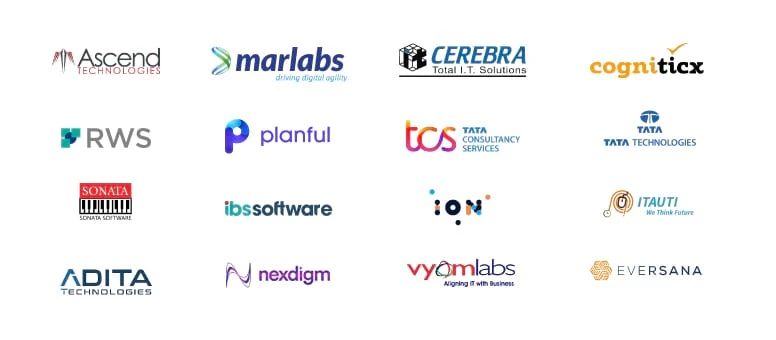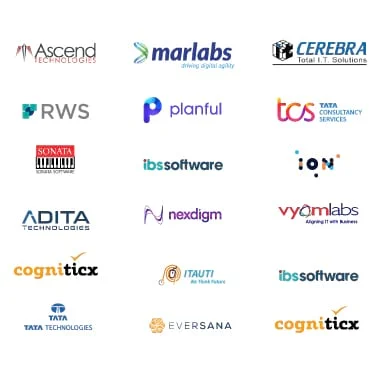30+ Hrs
Hands On Training
Lifetime Access
Updated Content
Customizable
Learning Paths
Industry Expert
Mentors
Projects
Advanced Interactive

Hands On Training
Updated Content
Learning Paths
Mentors
Advanced Interactive
Quality assurance is a method of eliminating errors and failures in manufactured goods and avoiding issues in supplying goods or services to customers, which ISO 9000 describes as 'a component of quality control based on ensuring trust that quality specifications will be met.
HKR delivers the best industry-oriented QA training course that is in line to clear the certification exams. Our course covers all the key concepts such as key fundamentals of QA, QA concepts,testing techniques, testing strategies,structured query language, load runner, mantis bug tracker, snagit tool, etc. During the training period, you can get full support and real-time project assistance from experienced professionals. Enroll today at HKR for accepting the new challenges to make the best out of our QA online training.
To apply for the QA Training, you need to either:
The QA training course curriculum is structured to streamline the learning process by a team of experts. You can find the complete course details in the below-mentioned modules.
1.1 Concepts of Testing
1.2 Why become a QA Tester?
1.3 Roles and Responsibilities of QA Tester
1.4 Characteristics of a Successful Tester
1.5 Significance of Software Testing
1.6 Client Application Vs Web(Server) Applications
1.7 Birth of a Project
1.8 SDLC-Software Development Life Cycle
1.9 V-Model
1.10 Waterfall, AGILE, RUP, etc.
1.11 BRD-Business Requirement Document
1.12 FRD-Functional Requirement Documents
1.13 System Design Specification
2.1 Formulating a Test Plan
2.2 Understanding Test Scenarios
2.3 Formulating a Test Case
2.4 Formulating Test Scripts
2.5 Types of Testing: Positive and Negative Testing
2.6 Test Summary Report
2.7 Software Testing Life Cycle (STLC)
2.8 Traceability Matrix
2.9 Types of Testing Methodologies
2.10 Testing Standards
2.11 Test Strategy and Planning
2.12 Comparing Sandbox Environment and Production Environment
2.13 Test Data and Test Execution
2.14 Test Logs and Reports
2.15 Comparing Severity and Priority
2.16 Comparing Manual Testing and Automated Testing
2.17 Testing Tools
2.18 Comparing Quality Assurance and Quality Check
3.1 Black Box Testing
3.2 White Box Testing
3.3 Path Testing
4.1 Formulating Test Cases using Microsoft Word and Excel
4.2 Formulating Cases in HP Quality Center (QC)
4.3 Test Cases on Different Domains
5.1 Unit Test
5.2 Integration Test
5.3 System Test
5.4 Regression Test
5.5 Functionality Test
5.6 Load / Performance Test
5.7 Stress Test
5.8 Compatibility Test
5.9 User Acceptance Test
5.10 Smoke Test
5.11 Sanity Test
5.12 Backend Test
5.13 Security Test
5.14 Browser Compatibility Test
5.15 Automated Testing and Automated Testing Tools
6.1 DLC – Defect Life Cycle
6.2 Defect Management
6.3 Defect Tracking
6.4 Understanding Priority and Severity
6.5 Defect Report – Through Microsoft Office or HP Quality Center
6.6 Impact Analysis
7.1 Understanding the Database
7.2 Understanding the Relational Database Management System
7.3 Normalizations
7.4 Understanding the SQL
7.5 Primary Key, Foreign Key, and constraints
7.6 Data Definition Language (DDL)
7.7 Data Control Language (DCL)
7.8 Data Manipulation Language (DML)
7.9 Sorting
7.10 Operators and Operand
7.11 SQL IN Clause
7.12 SQL BETWEEN Clause
7.13 SQL JOINS Clause
7.14 SQL GROUP BY and HAVING Clause
7.15 SQL VIEWS
7.16 Data Definition Language (DDL)
7.17 CREATE TABLE
7.18 ALTER TABLE
7.19 DROP TABLE
8.1 Variables
8.2 Operators
8.3 Comparison
8.4 IF…Else
8.5 Loops
8.6 Try…Catch
9.1 Overview of Quality Center
9.2 FULL WORKING KNOWLEDGE
9.3 Components of HP Quality Center
10.1 Why Automate?
10.2 Overview of QTP
10.3 Installation
10.4 Record and Playback Scripts
10.5 Object Identification and Object Spy
10.6 Synchronizing Tests
10.7 Standard and Text Checkpoints
10.8 Parameterize Tests
10.9 Data Driven Tests
10.10 Local and Global Data Tables
10.11 FULL WORKING KNOWLEDGE
11.1 Overview of Load Runner
11.2 Understanding Performance Testing
11.3 Types of Performance Testing
11.4 Architecture of Load Runner
11.5 Installation of Load Runner
11.6 Load Runner Scripts
11.7 Components of Load Runner
11.8 Virtual User Generator (VuGen)
11.9 Controller
11.10 Result Analysis
11.11 Parameterization, Actions, Correlation, etc.
11.12 Why LR?
12.1 Overview of Mantis Bug Tracker
12.2 FULL WORKING KNOWLEDGE
13.1 Installing tools "Putty" / Cygwin
13.2 Introduction to UNIX / Linux
Understanding UNIX Operating System
Role of Tester in UNIX
13.3 Important UNIX commands
13.4 What is FTP? FTP Commands, FTP tools like Filezilla, WinScp, etc.
13.5 FTP the files from one operating system to another.
13.6 Practice on UNIX / Linux
13.7 Understanding a shell script
13.8 Understanding VI Editor
13.9 What is Log file?
13.10 How to ftp log files to windows OS and send it to developers to track the defects
Business Requirement Document | functional requirement document ( FRD, BRD ) review. Design and execute Test Plan, Test cases o.....n the banking/finance domain. SQL queries and QA testing activities in the banking domain. Review testing test cases find defects and STLC on the banking domain project. Read more
Business Requirement Document - BRD on the healthcare domain. Test Plan, Test cases on health care domain. SQL and other testi.....ng activities on the healthcare domain. Review testing process - STLC on healthcare domain project. Read more
Business Requirement Document ( BRD ) review on telecom domain functionality. Test Plan, Test cases on telecom domain functionali.....ty. SQL, Unix / Linux, testing life cycle. Review the testing process - STLC on the telecom domain project. Read more


The QA training course benefits any aspirants from non-IT backgrounds who would like to achieve a successful career in IT.
There are no prerequisites to take up this QA Testing Training. Anybody with fundamental computer skills can opt for this course.
To start with the QA training course, you need to check with the best institute that delivers knowledge. Before proceeding to join any training, take suggestions from the experts who had already learned the course. We at HKR, with a team of industry experts, are ready to fulfill your dream career to achieve a job in desired companies.
Once you complete the entire course along with real-time projects and assignments, HKR delivers the course completion certification. This certification helps to get a job in any company very quickly.
Our trainers are highly qualified and certified with many years of industry experience with a technical background in QA.
Certification differentiates you from the non-certified peers, and you can demand the best salary in the leading companies.
We, at HKR, provide complete guidance to reach your dream job. But your job will be based on your performance in the interview panel and the recruiter requirements.
Each and every class is recorded so if you missed any class you can review the recordings and clarify any doubts with the trainer in next class.
Yes, we don’t assure 100% placement assistance. We are tied up with some corporate companies so when they have a requirement we send your profiles to them.
Yes, we provide demo before starting any training in which you can clear all your doubts before starting training.
Our trainers are real time experts who are presently working on particular platform on which they are providing training.
You can call our customer care 24/7
Max of the students get satisfied with our training, if you are not then we provide a specialised training in return.
For Assistance Contact:
![]()
![]() +91 9711699759
+91 9711699759
Query